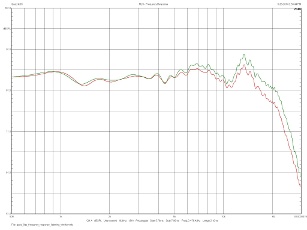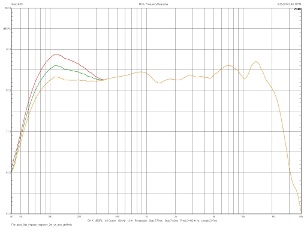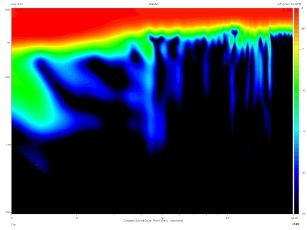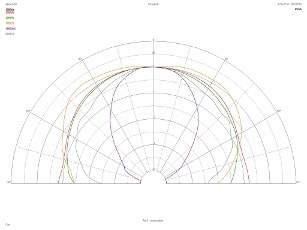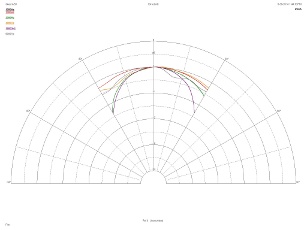about Audio, High Fidelity
& Home Entertainment technologies
pid: 607-2025/10/01 (v1.2)
Privacy Policy

Quasi-anechoic frequency response of the 9AS justified our good impressions, gained from previous assessments of both Quad 12L and QPM-1. The relevant diagram (above 500Hz) features some minor level deviations not very wide frequency-wise, promising to give the loudspeaker an fairly accurate and neutral character. Larger deviations could be observed in the very high frequency (above 10kHz). Overall, however, these do not exceed ±3.5dB for the entire measurement bandwidth and ±2.5dB for the 500H to 10kHz range. A point worth of a comment here, are the changes that occur with the installation of the grill. Given those data, it appears that Quad may know how to design loudspeakers, but not how to design grills as the result is quite disappointing if not infuriating. Seriously, though, the advice here is to not use these components unless necessary.
Comparison between the quasi-anechoic response and the response resulting from averaged on and off-axis (in a solid angle of about ±10 °) measurements, reveals that we are dealing with a loudspeaker whose radiation is generally smooth and its response is not varying abruptly off-axis. Average response (which, by many, is regarded as a better audio performance estimator) is characterized by even minor deviations.
Frequency response (dBSPL) above 500Hz. Quasi-anechoic on-axis measurement at 2m distance, with and without the protective grill (red and green curve, respectively).
Frequency response (dBSPL) above 500Hz. Quasi-anechoic on-axis measurement at 2m distance, (green curve) and averaged off-axis measurements (red curve).
Summed frequency response (with near field and far field/on-axis measurements spliced at about 500Hz, including 0.33oct smoothing) shows that a balanced character is maintained towards mid/low frequency parts. The relevant diagram comprises, in superposition, the system's response at the three equalizer options wherein it is apparent that there is a 3dB level gain or loss respectively for the boost and shelf positions, compared to the flat position, centered close to 110Hz. Referring to the flat response position, the cutoff frequency is close to 65Hz (-3dB) and to 60Hz (-6dB), values quite close to those quoted by Quad. In the high frequency region, the speaker cuts-off smoothly and without any visible resonance problems. The -3dB (compared to 20kHz) point is close to 23kHz. Considering, finally, that we are dealing with an active loudspeaker, take note that the vertical axis refers to the actual dBSPL measured, not dBSPL/2.83Vrms/1m, as it is usual in sensitivity graphs.
Step response is quite smooth, although one can detect a small discontinuity in the transition from the tweeter to the woofer. As has happened with other Quad loudspeakers evaluated, damping of the woofer is very smooth too. In this context, it is worth noting that the differences between the step response obtained from the measurement at 2m with that resulting from the measurement at 1m (not shown here) are minimal, probably an evidence that the loudspeaker can be used for listening from a short distance (as it should be the case for every loudspeaker designed to be placed near the listener as in desktop audio applications).
Summed frequency response (dBSPL), with far field/near field splicing, and 0.33oct smoothing. Equalizer set to "flat", "boost" and "shelf" (green, red and orange curve respectively).
Step response.
Cumulative spectra decay graph shows a behaviour which is pretty fast, though one can isolate a series of resonances, the stronger been at 4.6kHz (1.6mS for a 25dBr decay), 12.3kHz (1.6mS) and 15.6kHz (1.4 mS).
Polar response in the horizontal plane confirms the initial impression, arising from the relationship between the on-axis and the average frequency response, that the loudspeaker radiates rather evenly in space. Indeed, the relevant curves remain very smooth and within the limits of -6dB for large angles and the lobe narrows significantly only at very high frequencies, where it lies marginally outside the -6dB at ±30 ° angles. This means that for most applications a toe-in is not required (and, probably, positioning the loudspeaker without toe-in will reduce the peak in very high frequencies shown in the frequency response diagram).
Cumulative Spectral Decay graph, on-axis, quasi-anechoic measurement
Polar response diagram in the horizontal plane. Frequencies: 1kHz (red curve), 2kHz (green curve), 4kHz (gray curve), 8kHz (orange curve) and 16kHz (purple curve).
Polar response in the vertical plane, finally, does not raise any concerns regarding the criticality of the position of the listener with respect to height. Of course the performance is better for listening positions close to axis (and Quad clearly suggests that), but small variations in the interval of ±15° are not expected to cause any serious problems.

Polar response diagram in the vertical plane. Frequencies: 1kHz (red curve), 2kHz (green curve), 4kHz (gray curve), 8kHz (orange curve) and 16kHz (purple curve).


